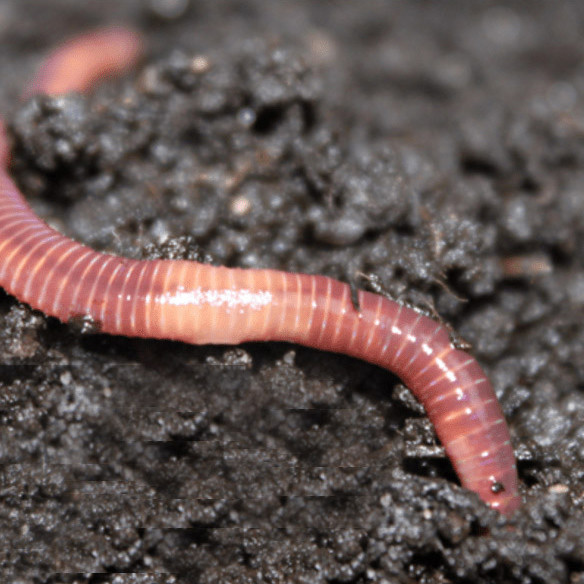Red Wigglers: Your Eco-Friendly Solution for a Greener Garden
Red wigglers, or Eisenia fetida, offer a sustainable method to boosting yard health and wellness via vermicomposting. These worms not just assist in the malfunction of natural waste but additionally add to enhanced soil framework and fertility. By integrating red wigglers into your horticulture techniques, you can properly manage waste while supporting a lively environment (red worms). The advantages extend past simple composting; understanding the nuances of their care and optimum use can significantly boost your gardening initiatives. What necessary methods can ensure your vermicomposting system grows while maximizing its influence on your garden's vigor?
(red wigglers for sale)
What Are Red Wigglers?
Although commonly incorrect for routine earthworms, red wigglers (Eisenia fetida) are a distinctive species recognized for their efficiency in composting raw material. These worms grow in rich, natural atmospheres, such as compost heap and vermicomposting systems, where they play a vital role in breaking down waste. Unlike their more usual counterparts, red wigglers choose a warmer habitat, normally in between 55 ° F and 77 ° F, which optimizes their task and productivity.
Red wigglers are characterized by their reddish-brown coloration and segmented bodies, which can mature to four inches in size. They have an one-of-a-kind capacity to consume and digest organic materials at an impressive rate, refining approximately half their body weight daily. This fast decay procedure not only improves the dirt however likewise adds to the overall health of the yard ecosystem.
In regards to reproduction, red wigglers are prolific, efficient in generating cocoons which contain numerous eggs. This permits quick population development, making them an ideal selection for composting ventures. Their flexibility and ravenous hunger for natural waste position red wigglers as a vital ally for environmentally conscious garden enthusiasts looking for sustainable practices.
Advantages of Making Use Of Red Wigglers
Utilizing red wigglers in the yard provides numerous benefits that improve both dirt high quality and plant health. These earthworms are extraordinary decomposers, breaking down raw material such as cooking area scraps and lawn waste right into nutrient-rich castings. These spreadings, frequently described as "worm gold," provide essential nutrients that boost soil fertility, advertising vibrant plant growth.
Red wigglers additionally improve dirt structure. The visibility of red wigglers raises microbial task in the soil, producing a flourishing community that contributes to condition resistance and improved plant wellness.
An additional considerable advantage of utilizing red wigglers is their ability to minimize waste. By composting natural products through vermicomposting, garden enthusiasts can draw away waste from garbage dumps while concurrently improving their soil. This eco-friendly strategy not only sustains lasting methods but likewise fosters a healthier environment. In recap, integrating red wigglers right into gardening methods yields significant benefits, making them a useful addition to any type of eco-conscious garden.
(Western North Carolina Bait)
Exactly How to Beginning Vermicomposting
To start vermicomposting, it's important to develop a suitable setting for red wigglers to flourish, as their success straight affects the performance of the composting process. Start by selecting a container, such as a plastic or wooden container, with appropriate drain and ventilation. A dimension of around 2 square feet is ideal for a household, enabling a manageable worm population.
Next, prepare bedding material that is damp yet not extremely wet. Shredded newspaper, cardboard, and coconut coir are exceptional selections, offering a comfortable environment while also working as a carbon source. Load the container with 4 to 6 inches of bedding.
After establishing the bed linen, introduce your red wigglers. A typical beginning populace has to do with 1 pound of worms, which can consume roughly half a pound of food scraps daily. It is important to include food scraps progressively, concentrating on vegetable peelings, fruit waste, and coffee premises, while avoiding meat, dairy products, and oily foods to protect against odors.
Preserving a Healthy Worm Bin
Once your red wigglers are worked out into their brand-new bedding, preserving a healthy and balanced worm container becomes vital to make certain optimal composting problems. Preferably, the worm container ought to be kept site link wet but not soaked; a moisture level around 60-70% is ideal.
Temperature level control is equally important. Red wigglers grow in atmospheres in between 55 ° F and 77 ° F(13 ° C to 25 ° C) Prevent exposing the bin to extreme temperatures; severe heat can kill the worms, while too much cold can reduce their task.
Oygenation is crucial to prevent anaerobic conditions, which can bring about undesirable odors and harm the worms. Turn the bed linen carefully every couple of weeks to advertise air movement and disperse food equally.
Feeding your red wigglers is one more important aspect. Offer a balanced diet plan of kitchen area scraps, avoiding citrus and spicy foods, which can be detrimental to their health. By consistently checking these variables, you can make sure a thriving community within your worm container.

Tips for Making Use Of Worm Spreadings
Consistently integrating worm castings right into your garden can substantially enhance dirt health and wellness and plant growth. To successfully use worm castings, start by establishing the proper application rate, which generally varies from 10-20% of the overall dirt volume. This makes certain ideal nutrient schedule without overwhelming your plants.
When applying worm spreadings, blend them into the leading couple of inches of soil around well-known plants or incorporate them into your seed-starting mix for new seed startings. Furthermore, take into consideration developing a worm tea by steeping worm spreadings in water for 24-48 hours.

Conclusion
The utilization of red wigglers in gardening techniques provides a lasting method to waste management and dirt enrichment. These composting worms not just convert natural waste right into useful nutrients but likewise enhance dirt structure and advertise a healthy microbial ecosystem. By taking on vermicomposting methods, garden enthusiasts can effectively contribute to ecological sustainability while improving plant health and wellness. The assimilation of red wigglers into gardening routines ultimately supports both eco-friendly balance and farming productivity.
 Ralph Macchio Then & Now!
Ralph Macchio Then & Now! Molly Ringwald Then & Now!
Molly Ringwald Then & Now! Keshia Knight Pulliam Then & Now!
Keshia Knight Pulliam Then & Now! Erik von Detten Then & Now!
Erik von Detten Then & Now! Bill Murray Then & Now!
Bill Murray Then & Now!